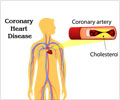The well-documented disparities in cardiac care may begin almost as soon as patients arrive at hospital emergency rooms.

"In this first nationally representative sample of emergency room patients, we found persistant racial, gender and insurance-coverage based differences in triage categorization and cardiac testing," says Lenny Lopez, MD, MPH, of the Mongan Institute for Health Policy at MGH, the study's lead author. "Emergency room triage is the critical step that determines the whole cascade of clinical decisons and testing that happens next, so if patients are misclassfied on arrival, they won't receive the care they need when they need it."
Many studies have documented racial, ethnic and gender-based differences in the likelihood that patients with cardiac symptoms will receive procedures like cardiac catheterization, angioplasty and coronary artery bypass surgery. The current study was designed to evaluate whether the initial, emergency-room triage decision – a quick assessment to determine which patients need to be seen immediately and which can wait – has a role in these disparities. The researchers evaluated data from the National Hospital Ambulatory Health Care Survey of Emergency Departments (NHAMCS-ED) covering 1997-2006, including the age, gender, race/ethnicity and insurance status of patients coming to the surveyed hospital departments (EDs) with chest pain.
The NHAMCS-ED uses four triage categories: emergent for patients who should be seen immediately, urgent for those who can wait 15 to 60 minutes, semiurgent for patients who can wait one to two hours, and nonurgent for those who can wait two hours or longer. For purposes of this study, patients in the first two categories were classified as emergent, and those in the last two as nonemergent. The total sample of 235,000 ED visits over the 10-year period included almost 22,000 patients arriving with chest pain or related symptoms such as tightness or burning in the chest area.
Among patients who received an ED diagnosis of probable myocardial infarction (heart attack), there were no significant differences in initial symptoms between racial or ethnic groups. As previous studies have found, women eventually diagnosed with heart attack were less likely to report chest pain than were men. But among all those presenting with chest pain, African American and Hispanic patients were significantly less likely than white patients to be triaged as emergent. In addition, African American and Hispanic patients, as well as those who were uninsured or covered by Medicaid, were less likely to receive such basic cardiac testing procedures as ECG, cardiac monitoring or measurement of cardiac enzymes. Factors such as whether patients arrived by ambulance or the day of the week on which they were seen did not make any difference.
"These differences in ED triage may be important drivers of disparities in testing, procedures and eventual outcomes," says Lopez. "If you are misclassified at this first step, you're less likely to get the ECG because your condition is not considered urgent. In the long term, you may have an even more severe heart attack that could have been prevented if intervention had occurred earlier. This is not an area of medicine where there is a lack of clarity about what we are supposed to do, so quality improvement strategies need to focus on 100 percent guideline-driven triage management for every single patient."
Advertisement
Source-Eurekalert














